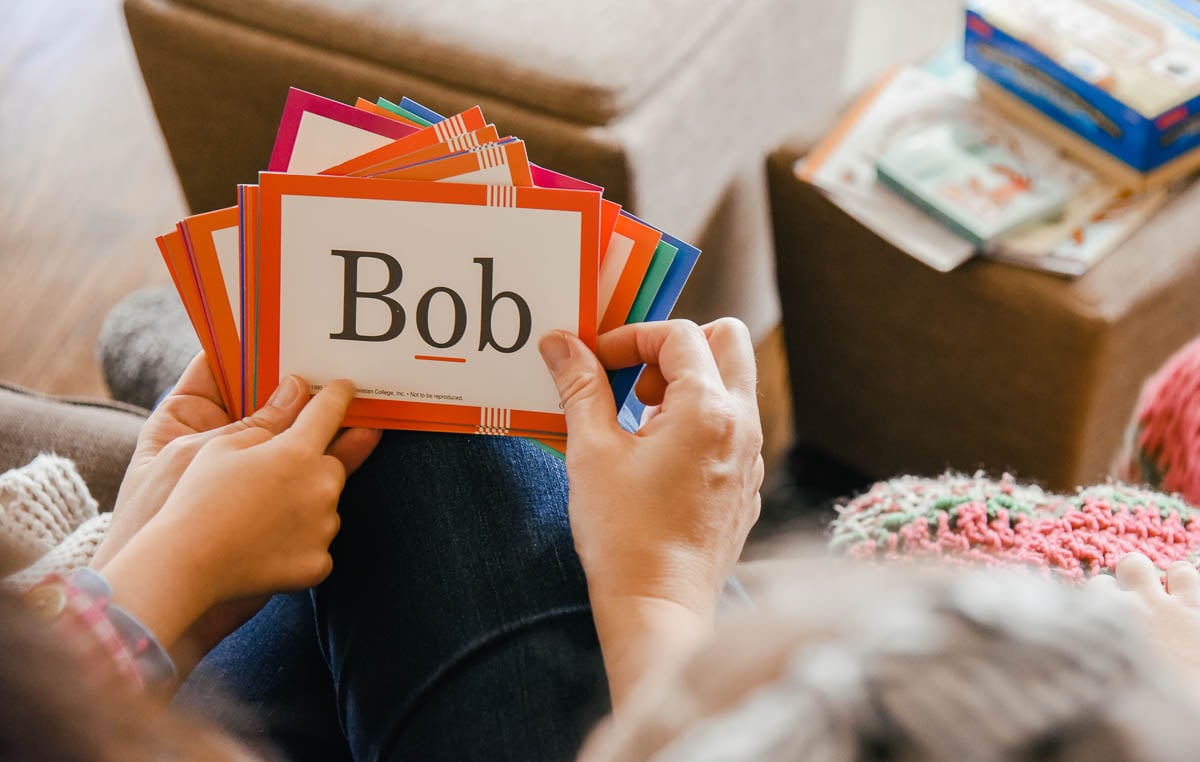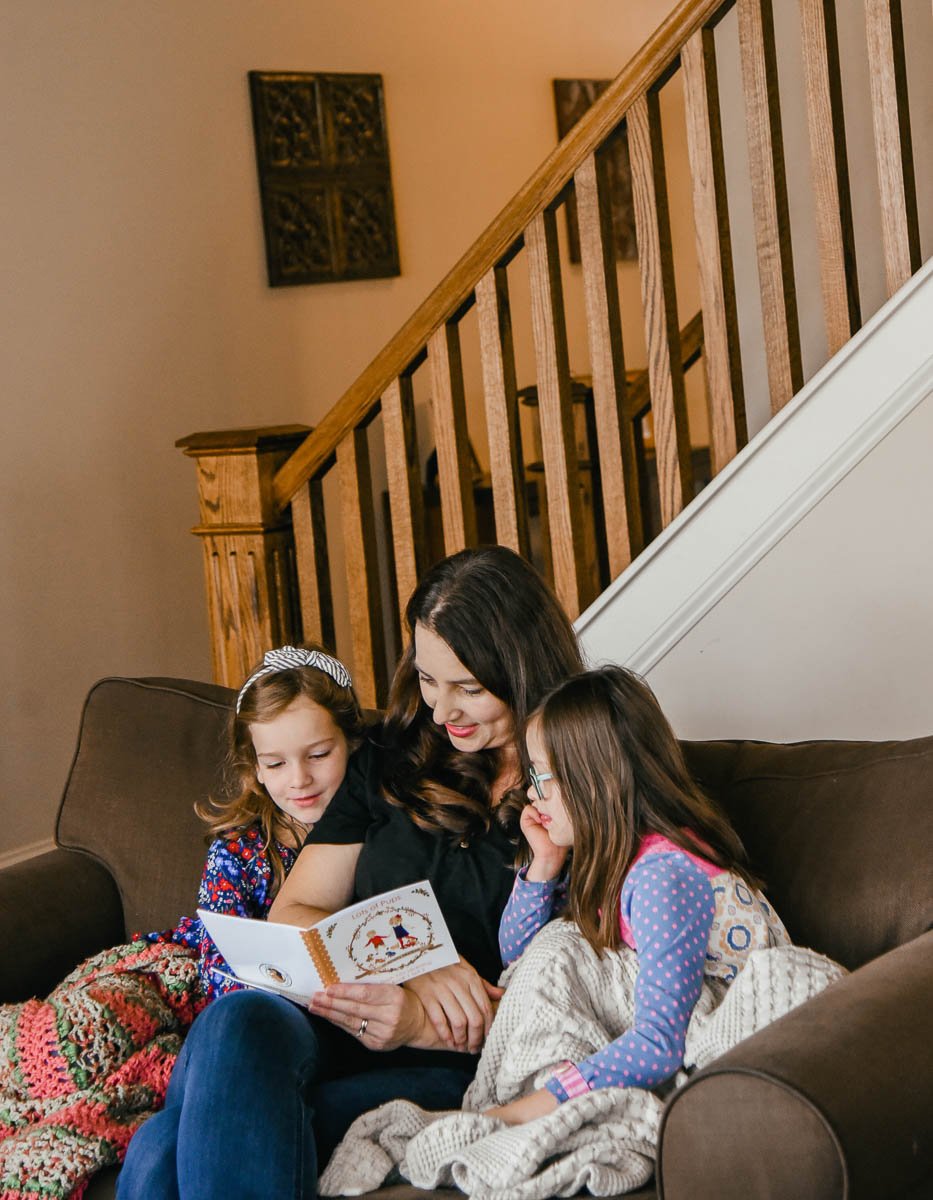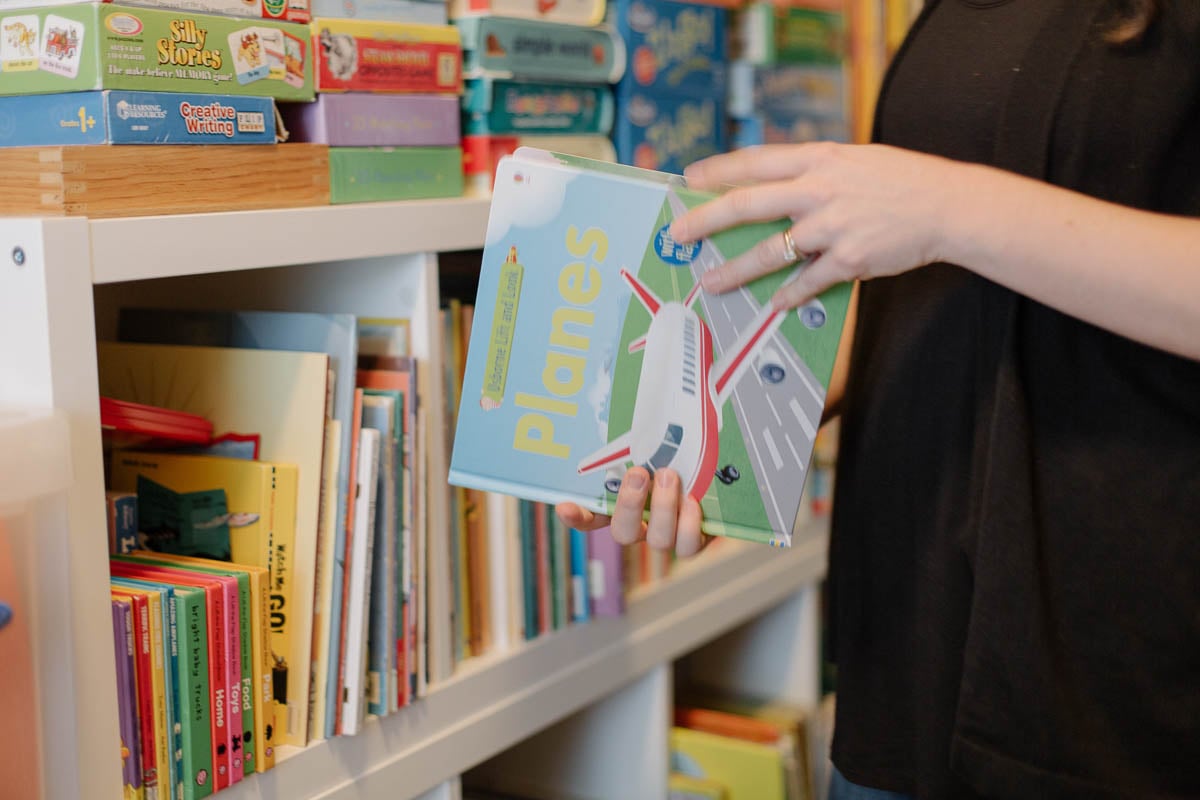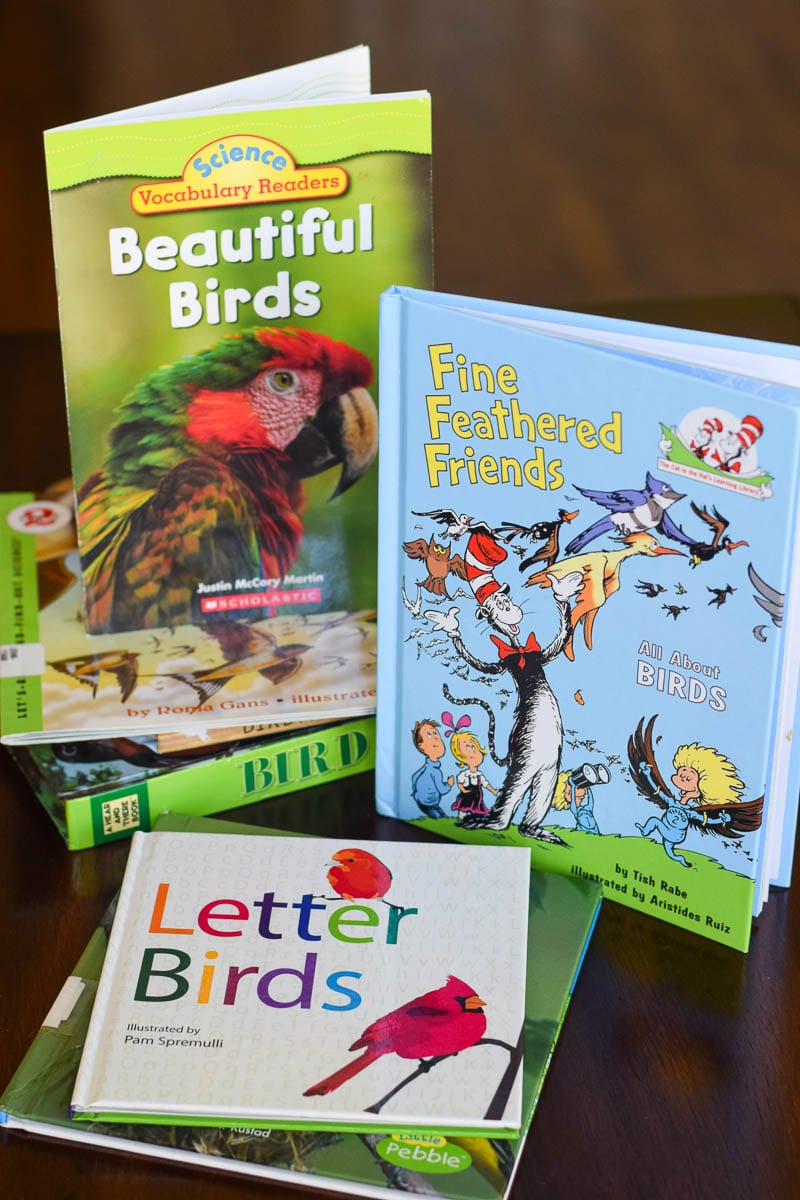Homeschooling Kindergarten
Welcome! If you’re new to This Little Home of Mine, I’m Elizabeth. I am a former elementary school teacher who is now homeschooling my kids. In this post, I’m sharing all about homeschooling kindergarten!
Around here, we embrace a year-round family-style approach to homeschooling – a 365-day-a-year round-the-clock approach to living and learning together.

Get our THIS LITTLE HOME OF MINE nEWSLETTER
Delivered directly to your inbox!
I love how educational opportunities can so naturally be woven into day-to-day life, and I’m excited to give you a glimpse into what that has looked like in our house during the kindergarten year.

If you’ve visited me in this space before, you may have seen where I share about homeschooling.
I have put together age-specific posts to assist homeschooling families in their journey, and my hope is that as I share what has worked well for us that you will be inspired to find what works best for your family.
- Two-Year Old Homeschool Preschool
- Three-Year Old Homeschool Preschool
- Four-Year Old Homeschool Preschool
- Homeschooling Kindergarten
- Homeschooling First-Grade
- Homeschooling Second-Grade
- Homeschooling Third-Grade
- Homeschooling Fourth-Grade
- Homeschooling Fifth-Grade
- Homeschooling Middle School
If you are considering homeschooling your kindergartner, I’m so glad you’re here.
My goal for this post is to keep things as simple as possible – providing you with a glimpse in to what we’ve done, hoping you will feel inspired in our own way.
Homeschooling Kindergarten Resources
Let’s get started – We’ll go subject-by-subject!

Bible
There are lots of companies that offer beautiful faith-based curriculum, but for Bible, we use simple resources I have collected over the years:
- The Jesus Storybook Bible: Every Story Whispers His Name
- Big Thoughts for Little People
- and a variety of others that I’ve shared here.
We have made Scripture Memorization a part of our daily homeschool routine.
- For our three-year old homeschool year, we memorize Psalm 23 and portions of Luke 2 (around the Christmas holidays).
- For our four-year old homeschool year, we memorize Psalm 100 and revisit those same portions of Luke 2 around the holidays – continuing to review Psalm 23 as well.
- For our kindergarten year, we memorize The Lord’s Prayer, revisit Luke 2 again during the Christmas season, and periodically review Psalm 23 and Psalm 100.
We focus on one specific chapter each year.
Not only does this give us the opportunity to truly meditate on the verses in the passage, but it also keeps us from getting overwhelmed.
Scripture memory is also a focus in some of the outside programs in which my kids are involved, and I definitely want to ensure that Bible memory remains meaningful (and fun!) for them.
We are part of a local AWANA program. If you have an AWANA program near you, I would highly recommend it. It is a fantastic way to encourage your children to learn Scripture.

Scripture Memory Practice Ideas:
- Read Aloud – Read your verse(s) aloud before meals, before bedtime, while you’re sitting in the car, while you’re waiting at the doctor, etc. For most kids, this repetition will be enough for them to quickly memorize the passage you have chosen for them.
- Perform – Kids enjoy acting things out, putting on puppet shows, making videos of themselves on their tablet. Try incorporating Bible memory practice in to these activities!
- Share – Our kids are always excited to call or video chat with their grandparents! As they learn new verses, they love sharing them with their family in this way, and we enjoy watching them get to celebrate their accomplishments.
Scripture Memory Resources:
- Scripture Music – While there are so many incredible resources out there, my absolute favorite is Steve Green’s Hide ’em In Your Heart Collection. Even as an adult, I oftentimes find myself singing these that I learned when I was a kid.
- YouTube/iTunes – There are so many great little songs/videos available on-line that are fun to use for Bible Memory practice. My kids especially like watching other kids recite a specific passage they are learning. Find something on-line that is a good fit for your kids, and put it to use!
- Pinterest – Pinterest is full of creative ideas and helpful resources! While Pinterest can be helpful, it can also be overwhelming. So find a few things that you think will work for you – Be realistic, and remember to keep this fun for you as well!
Language Arts
For Phonics, we use Abeka, and for the Kindergarten year, we use their Letters & Sounds K5 workbook…

…as well as all of their Phonics Charts, Blend Practice Cards, and Word Cards.

Throughout the four-year old pre-school year we interact with Phonics Charts 1 & 2, but as our preschooler grows in their understanding of phonics, we add additional phonics charts to our daily practice.
We begin using the following Abeka products, but if you don’t get started with these until the Kindergarten year, no worries!
- Blend Practice Cards A
- One-Vowel Word Cards
- Blend Practice Cards B
- Two-Vowel Word Cards
- Clue Word Cards – These are color-coded to coordinate with the Phonics Charts.


Abeka’s curriculum allows you to start with the most basic concepts and grow from there as your child moves along in their learning and you become more comfortable with their program.

If you are new to Abeka Phonics, you may find that their parent resources will be a great resource for you.
In addition to the Letters & Sounds K5 workbook, we use the Writing with Phonics K5 – Manuscript workbook for handwriting (and additional phonics practice).

Some families choose to begin with the Abeka’s Cursive workbook option, but my personal preference is to introduce cursive during the second-grade year.


If you are interested in a different handwriting program altogether, Handwriting Without Tears offers several great options for beginning writers as well as a variety of sensory activities that complement their program.

In a variety of different settings, I have seen fantastic results with both their manuscript and older-student cursive programs.
This has been a great option for my oldest daughter!

Their company also offers Keyboarding without Tears which has been an excellent addition to our Kindergarten year.

Other great Language Arts Technology Options:
Supplemental Readers You Might Want to Check Out:
As your kindergartner is ready, supplemental readers can be great for reinforcement.

Here are some we’ve used:
- A Beka’s Basic Phonics Readers
- ABC See, Hear, Do
- I Can Read Books
- Bob Books
- Dr. Seuss Books like this one.
- Dash Into Learning Readers

Math
For Math, we also use Abeka, and their Numbers & Skills K5 workbook is excellent – bright, colorful, and includes a great variety of activities!

My goal with each math lesson is to – when it all possible – make whatever is on the page come alive in real life using resources/hands-on activities I have on hand.

Actually, that is my goal with all subject areas – not just math!
Abeka’s workbooks are fantastic guides for our learning, but I always, always, always encourage what I like to call 5 Senses Interaction:
How can I see, touch, smell, hear, and maybe possibly even taste what I’m learning?

My curriculum orders to Abeka don’t include all the additional charts and flashcards and such.

I use comparable options we already own or cheaper options I find elsewhere that will accomplish the same goals!

Looking for some extra math practice?
Maybe you’re simply wanting a few minutes of extra reinforcement and enrichment each day throughout the summer. Kumon workbooks have worked well for us over the years.
Kumon offers a great selection of activity books for both Language Arts and Math – all incredibly interactive, but maybe you have found something similar that you like even better! If so, use those!
Science, History, and Creative Arts
When it comes to science and history, I do not order a specific curriculum for the K5 year.
For kindergarten, I simply glance at the key themes included in many popular faith-based kindergarten textbooks and then build a few units that would work well for us using this very simple method.

Yes, the same approach I use during the preschool years!

Need some ideas for Kindergarten Units? Check out Abeka’s Social Studies K5 reader as well as Abeka’s Science K5 text. (Click Look Inside to view Table of Contents.)
Want to print your own three-page planning pack?
Over the years, we have chosen to do year-round homeschooling, and summer months have been the perfect opportunity to spend some extra time exploring simple science and history units – and I use the word units quite loosely.
A weekly science experiment throughout the year is a great way to incorporate science learning into your family’s rhythms and routines.
I have loved using this book for ideas: Science Experiments for Young Learners is a book I’ve had for years, but the experiments are effective while being incredibly simple – using mostly objects we already have around our house.
If you have younger kids focusing on a letter-a-week, it is fun to choose an experiment that somehow connects with the letter for the week.
For example, the week they are learning about letter W, try a water experiment. Get the idea?

This is a great way to once again bring everyone together instead of always separating activities by age.

For art, music, and physical education, our kiddos are involved in several different activities and local programs.
We also keep an eye out for any age-appropriate opportunities being offered at our museums, libraries, theaters, etc.
There seem to be loads of great resources right in our backyard, and many of them are free.

Some areas have local Facebook groups dedicated to connecting homeschooling families to amazing field trips.
Be sure to check out what is going on in your town!
One of my favorite things about homeschooling is all of the additional opportunities you are able to provide.
If you’re in the Carolinas, I highly recommend the following:
- Children’s Theater of Charlotte
- Little Otter Swim School
- Stewards of the Game or Upward
- Learn Music
- Melodies in Motion
- Cornelius Arts Center
- A Variety of Local Pick-Your-Own Farms
How Do I Stay Organized?
While I would encourage some level of organization and consistency in many of your routines, please also be willing to embrace the flexibility homeschooling gifts your family.
It’s one of the most beautiful things about learning together at home.
I typically plan out 1-2 months at a time (in pencil!) – leaving room for any holidays, out-of-town trips, etc. that would take us away from our usual routine.
Now, for my #1 homeschool organization tip: On Sunday night, I lay out most of my supplies for the week.

Depending on the situation, some supplies come out the night before we do the actual activity, but I do try to be a head of the game on this somewhat in order to make sure the activities will actually happen as I hope.

What Do My Kindergarten Lesson Plans Look Like?
Each day begins with our Morning Time:
These are all daily practice activities we go through each morning and then we walk through the worksheets/activities planned for each day, and please, please, please edit the printable to make your Morning Routine look like YOU want it to look.
Then don’t be afraid to edit and adjust throughout the year.

Our Morning Time has definitely evolved over the years and it adjusted as needed throughout each year of homeschooling.
During this time, everyone is together!
Yes, even the little ones.

They may be sitting on my lap or crawling around all over the place, but they’re invited…and included as much as possible…and it really helps to cut down on some of the frustration that can come with “Go over there and play quietly while Mom does school with the big kids.”
My suggestion? Find as many ways as possible to do as much as possible TOGETHER!

This can be a little trickier if your children are farther apart in age, but there are some fantastic programs out there (especially for Bible, Science, History, etc.) that are specifically designed to bring a variety of age groups together!

Where Do I Find Ideas for Hands-On Activities?
I like to brainstorm ahead of time about what kinds of activities my child will enjoy doing as I seek to introduce and/or reinforce the concepts in their workbooks.
- Does your child love storybooks?
- Puzzles?
- Do you own any educational games they especially enjoy?
- Is your child artistic?
- Musical?
Consider these kinds of questions and then tailor your activities to their interests.
Another beautiful thing about homeschooling is you can plan your lessons specifically for your child, so don’t hesitate to do just that!

Doing so guarantees they will enjoy learning with you which is most definitely the number one goal!
If you find an activity isn’t working well (and there can be a variety of different reasons why this might be the case), don’t stress.
Simply stop what you’re doing and redirect.
If you’re having trouble coming up with ideas for your little one, spend a little time exploring Pinterest!
Where Do I Find Supplemental Resources:
Most of my educational supplies/toys have come from yard sales, thrift stores, and consignment sales.
You can even find great resources at the dollar store.
You do not have to spend a lot of money to provide great resources for your children.

Technology:
Whether it’s a phonics skill, a math skill, or something science-related my kids are interested in, I oftentimes search on YouTube for a related video.
It’s usually just a short little something that will reinforce the concept, and in doing so, I have come across some gems.
Technology can be such an amazing resource, so don’t be afraid to incorporate it in to your homeschooling.
In general, some of our favorite YouTube channels include:
- Super Simple Learning
- Maple Leaf Learning
- Oh My Genius
- Storybots
- Jack Hartmann
- Patty Shukla
- Mother Goose Club
- Art for Kids Hub
My kids have also enjoyed:
- Adventures in Odyssey – The streaming app gets lots of use in our house!
- Patch the Pirate
- Geronimo Stilton Audiobooks
- Playaways from Our Local Library











Very nice, Elizabeth. I bet it’s a great learning environment for your kids!